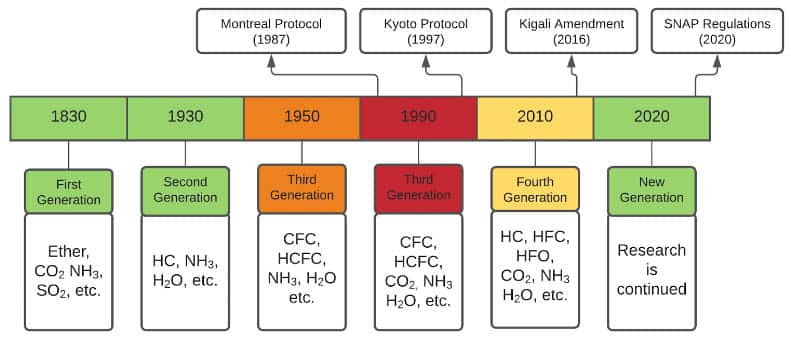Refrigerants have been a long-contested topic in the HVAC industry owing to their contribution to global warming. Refrigerant technology has evolved rapidly in the last century, from CFCs in the 20th century to the current generation of HFC-based refrigerants such as R-410A. The front-runner for the new generation of refrigerants is R-32, which is touted as the next industry standard due to its superior energy efficiency, low toxicity and reduced environmental impact. The following table highlights the Global Warming Potential (GWP) of currently used refrigerants compared to newer generation refrigerants.

The U.S. Government is also supporting this transition through legislation such as the American Innovation & Manufacturing Act (AIM) and the EPA’s SNAP Program, both of which promote the phaseout of HFC refrigerants by 2036. The introduction of these policies could lead to a rise in the cost of current refrigerants as their availability decreases. By converting to these next-generation solutions now, manufacturers can ensure that their existing equipment will continue to function safely and efficiently well into the future, while reducing the impact to both greenhouse gas emissions and their bottom line.

